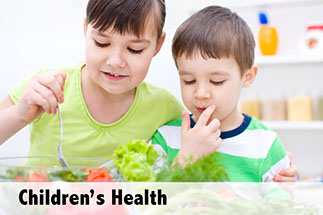CONDITIONS
SYMPTOM CHECKER
Male
Female
Child
Arm, Hand & Shoulder Concerns
Legs & Feet Concerns
Dental & Mouth Concerns
Ear & Nose
Eye Conditions
Head Conditions
Arm, Hand & Shoulder Concerns
Legs & Feet Concerns
Front
Back
Arm, Hand & Shoulder Concerns
Dental & Mouth Concerns
Ear & Nose
Eye Conditions
Head Conditions
Arm, Hand & Shoulder Concerns
Dental & Mouth Concerns
Ear & Nose
Eye Conditions
Head Conditions
Front
Back
Arm, Hand & Shoulder Concerns
Neck Links
Head & Neck Concerns
Arm, Hand & Shoulder Concerns
Neck Links
Head & Neck Concerns
Front
Back
Online Clinic
Wise Healthcare
Headaches
Print on Demand
RELATED ARTICLES
Headaches are a common health complaint in women.
For Tension or Muscular Headaches
• A dull ache in your forehead, above your ears, or at the back of your head.
• Pain in your neck or shoulders.
Fainting
Common causes are tense or tight muscles in the face, neck, or scalp, concentrating hard for long periods of time, stress, and lack of sleep.
Menstrual Cramps
For Sinus Headaches
• Pain in your forehead, cheekbones, and nose. The pain is worse in the morning.
• Increased pain when you bend over or touch your face.
• Stuffy nose.
A sinus headache occurs when fluids in the nose aren’t able to drain well and a buildup of pressure occurs in the sinuses. A cold, allergies, dirty or polluted water, and airplane travel can cause a sinus headache.
For Migraine Headaches
• One side of your head hurts more than the other.
• You feel sick to your stomach or vomit.
• Light hurts your eyes. Noise bothers you. The headache is worse with activity.
• After the headache, some people have a drained feeling with tired, aching muscles; others feel great.
Resources
Migraines can occur with or without an aura. With an aura, spots or flashing lights or numbness occur 10 to 30 minutes before the headache. Ten percent of all migraines are this type; 90% occur without an aura.
Migraine headaches happen when blood vessels in your head open too wide or close too tight. They tend to run in families and affect nearly 30% of women at some time during their lives. They occur more often in women than in men.
Migraines occur less often during pregnancy (especially the second half) and often disappear during menopause. Some women, though, may get migraines for the first time during menopause.
Certain things trigger migraine headaches:
• Changing hormone levels. Menstruation.
• Use of birth control pills or the patch.
• Change in sleeping patterns.
• Stress.
• Aged cheeses. Cured meats. Red wines.
Other Causes of Headaches
• Analgesic rebound from regular or repeated use of over-the-counter or prescribed pain relievers.
• Eating or drinking something very cold, such as ice cream. {Note: To prevent ice cream headaches, warm the ice cream for a few seconds in the front of your mouth.}
• Caffeine withdrawal.
• Low blood sugar, hunger, or sensitivity to certain foods and drinks.
• A symptom of a health problem. Examples are allergies, depression, high blood pressure, dental problems, and a pinched nerve in the neck.
• Cigarette smoke, pollution, etc.
• Uncorrected vision problems.
Treatment
Self-care can treat headaches caused by tension, fatigue, and/or stress. Certain over-the-counter medicines and prescribed medicines can treat sinus headaches and migraine headaches.
Biofeedback has helped many people who have suffered from headaches.
Headaches that are symptoms of health problems are relieved when the condition is treated with success.
Questions to Ask
Question 1
Is the headache linked with a serious head injury or passing out?
Get medical care without delay. If symptoms are life threatening go to the ER or call 9-1-1. Don’t call 9-1-1 or use the ER if symptoms do not threaten life. Ask your doctor ahead of time where you should go for a problem that needs prompt care, but not emergency care.
Call 911
Question 2
Does the headache occur with severe pain in and around one eye, blurred vision, double vision, slurring of speech, mental confusion, personality change, or a problem moving the arms or legs?
Get medical care without delay. If symptoms are life threatening go to the ER or call 9-1-1. Don’t call 9-1-1 or use the ER if symptoms do not threaten life. Ask your doctor ahead of time where you should go for a problem that needs prompt care, but not emergency care.
Call 911
Question 3
Has the headache come on fast and does it hurt much more than any other one you have had?
Get medical care without delay. If symptoms are life threatening go to the ER or call 9-1-1. Don’t call 9-1-1 or use the ER if symptoms do not threaten life. Ask your doctor ahead of time where you should go for a problem that needs prompt care, but not emergency care.
Question 4
Is the headache severe and does it occur with a high fever, drowsiness, a stiff neck, a seizure, or a red or purple rash that doesn’t fade when the skin is pressed?
Get medical care without delay. If symptoms are life threatening go to the ER or call 9-1-1. Don’t call 9-1-1 or use the ER if symptoms do not threaten life. Ask your doctor ahead of time where you should go for a problem that needs prompt care, but not emergency care.
Question 5
Do you have nausea or vomiting with a headache that doesn’t go away or that recurs?
You should be seen by your doctor for medical advice. Contact your doctor or health care provider to find out how soon you should be seen.
Question 6
Does a headache wake you from sleep, resist treatment with over-the-counter remedies, or get worse when you bend over?
You should be seen by your doctor for medical advice. Contact your doctor or health care provider to find out how soon you should be seen.
Question 7
For pregnant females, does swelling of the legs, hands, and/or face occur with the headache?
You should be seen by your doctor for medical advice. Contact your doctor or health care provider to find out how soon you should be seen.
Question 8
Is the headache not relieved by over-the-counter pain relievers and does it occur with any signs, symptoms, and causes of a migraine headache or with a history of high blood pressure?
You should be seen by your doctor for medical advice. Contact your doctor or health care provider to find out how soon you should be seen.
Question 9
Do you take pain relievers more than 3 times a week for at least 3 weeks for headaches or did you get headaches only after taking a new medicine?
You should be seen by your doctor for medical advice. Contact your doctor or health care provider to find out how soon you should be seen.
Use Self-Care / Prevention:
You can probably take care of the problem yourself if you answered NO to all the questions. Use the “Self-Care” measures that are listed. Call your doctor if you don’t feel better soon, though. You may have some other problem.
Self-Care / Prevention
• Don’t smoke. If you smoke, quit!
• Try to stop the headache when it starts.
• Take an over-the-counter (OTC) medicine for pain as directed on the label.
• Rest in a quiet, dark room with your eyes closed.
• Massage the back of your neck with your thumbs. Work from the ears toward the center of the back of your head. Also, rub gently along the sides of your eyes. Gently rub your shoulders, neck, and jaw. Get a massage.
• Place a cold or warm washcloth or hot or cold pack, whichever feels better, over the area that aches.
• Take a warm bath or shower.
• Relax. Picture a calm scene in your head. Meditate or breathe deeply.
• Keep a diary of when, where, and why headaches occur.
• Get enough rest.
• Eat 5 to 6 small meals instead of 3 large meals. To ward off low blood sugar, don’t skip meals. Avoid sweets.
• Keep regular sleeping times as much as you can.
• When lying down, use a pillow that supports the neck. Sleep on your back.
• Avoid scents, foods, and beverages that trigger headaches.
• To help prevent headaches and nausea caused by a hangover, try an OTC product, such as Chaser–Freedom From Hangovers.
• For a hangover: After drinking alcohol, take an OTC pain reliever. Eat solid foods. Rest or sleep. Have 2 or more glasses of water before you go to sleep. Drink 2 or more glasses of water when you wake up.
Foods and Drinks that May Cause Headaches
• Alcoholic beverage, especially red wine
• Aspartame (the artificial sweetener in NutraSweet®)
• Bananas (if more than 1/2 banana a day)
• Caffeine from coffee, tea, cola soft drinks, chocolate, or some medications
• Lack of caffeine if abruptly stopped, such as stopping coffee intake
• Citrus fruits (if more than 1/2 cup a day)
• Cured meats, such as frankfurters
• Food additives, such as monosodium glutamate (MSG)
• Hard cheeses, such as aged cheddar or provolone
• Nuts and peanut butter
• Onions
• Sour cream
• Soy sauce
• Vinegar
This website is not meant to substitute for expert medical advice or treatment. Follow your doctor’s or health care provider’s advice if it differs from what is given in this guide.
The American Institute for Preventive Medicine (AIPM) is not responsible for the availability or content of external sites, nor does AIPM endorse them. Also, it is the responsibility of the user to examine the copyright and licensing restrictions of external pages and to secure all necessary permission.
The content on this website is proprietary. You may not modify, copy, reproduce, republish, upload, post, transmit, or distribute, in any manner, the material on the website without the written permission of AIPM.
2021 © American Institute for Preventive Medicine - All Rights Reserved. Disclaimer | www.HealthyLife.com
















































